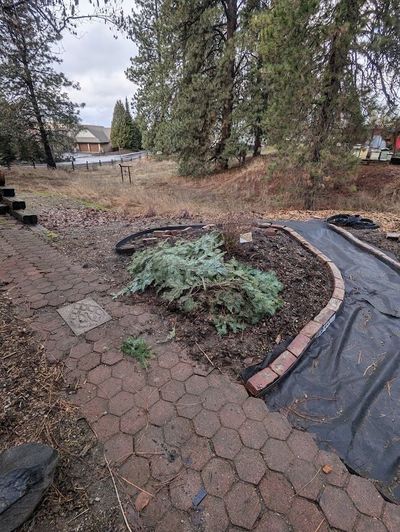Gardening: Protect plants that might be damaged by changing weather patterns

With our recent weather, I’ve been wondering if I had been transported back to the West Side where I grew up.
Winters in my hometown of Shelton, Washington, were wet, 50 to 60 inches of rain annually, and temperatures were generally in the low 40s. Even in these conditions, we still worked in the garden.
Memories of those winter gardening efforts came flooding back as I was digging holes in unfrozen dirt last week and hearing from friends that they still had blooming petunias, snapdragons and violets. Where was I anyway? Surely not cold, snowy Spokane.
It’s been an unusually warm winter, but memories of last winter’s subzero cold snap aren’t far away. We lost all kinds of roses, laurel hedges, lavender and other supposedly hardy plants because we had no snow cover to insulate the plants. The same thing could still happen this winter.
It’s clear that climate change is disrupting the weather patterns we have counted on to measure our gardening year. Many of our old weather bench marks aren’t showing up when we expect them to. And they are going to continue changing.
The annual reports on last year’s weather patterns are sobering. Last year was the hottest year on record. There were wildfires in the West and also in New England. A report out last week said that the frequency of thunderstorms and lightning is increasing in the Midwest. Here, we suffered through two major monthlong heat waves in 2023 and 2024 that disrupted our garden harvests. I don’t remember picking the first ripe tomatoes in mid-September.
How do we as gardeners prepare for all these changes? In the short term, we can continue covering plants to protect them from a potential cold snap. Cut the branches off your real Christmas tree and lay them over the plants to trap warmer soil temperatures and help hold snow if we get some. Try covering plants with a couple of layers of floating row cover anchored with wire staples to trap a little heat. If you have leftover mulched leaves and needles, mulch more plants.
In the long term, we need to start tracking the weather conditions in our gardens. Start keeping a journal to note weather patterns like the first and last frost in the year, when plants bloomed, conditions on the day you planted your vegetable garden and temperatures during a heat wave. Note what variety of seeds you planted, how they grew through the season and your harvest results. Purchase a soil thermometer and measure soil temperatures as you plant. It will be a few years before you can discern a pattern, but having the journal to look back to helps you plan. With our changing climate conditions, we may have to change some of our old favorite varieties for varieties that stand up better in the new conditions.
On a high note, I added my last garden tomato to a bowl of guacamole for New Year’s Eve.